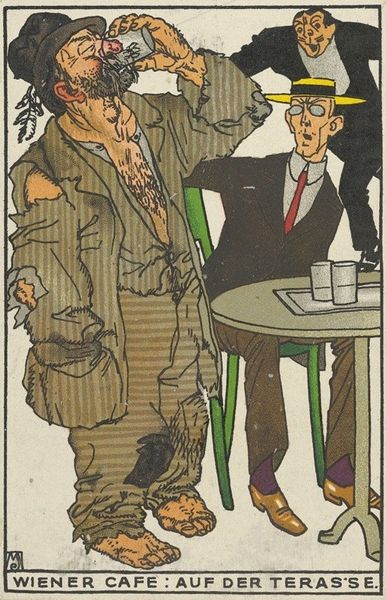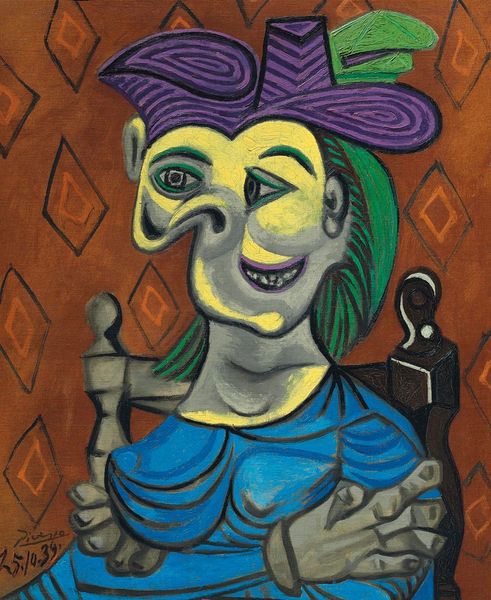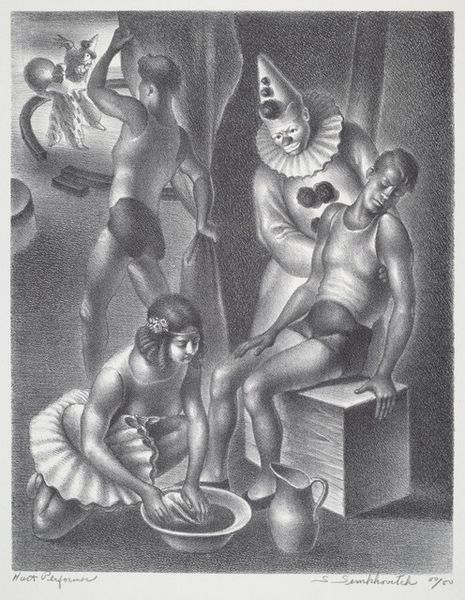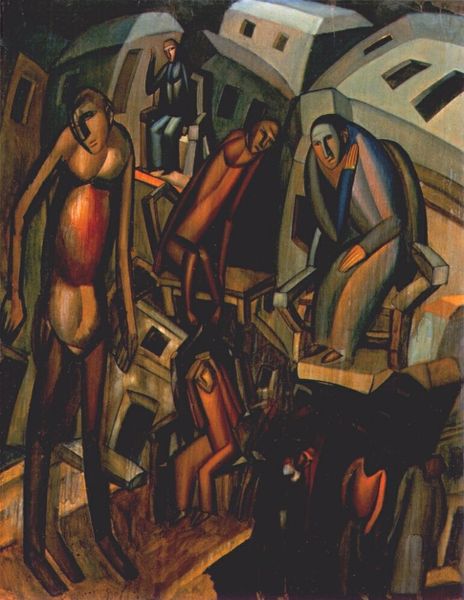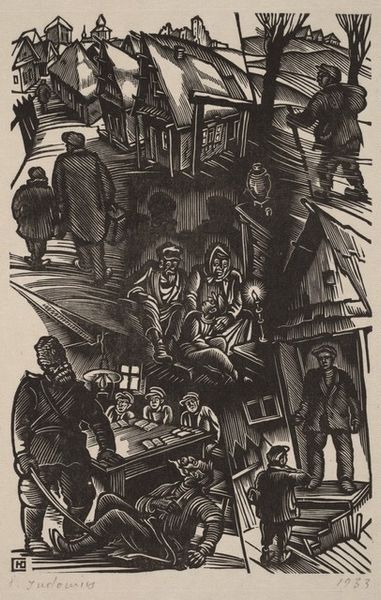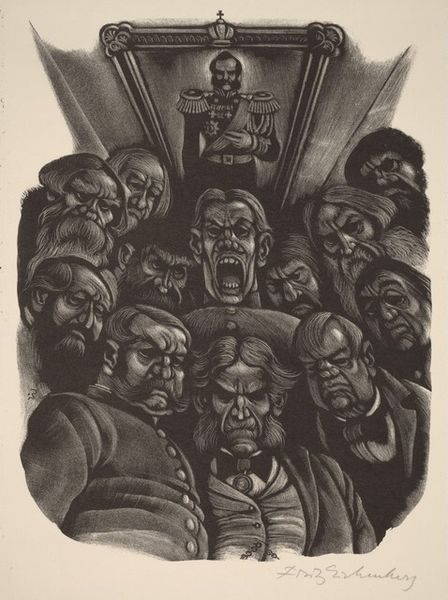
#
portrait
#
figurative
#
character portrait
# print
#
caricature
#
caricature
#
german-expressionism
#
expressionism
#
portrait art
Copyright: Public Domain: Artvee
Editor: So, here we have Karl Wiener's "Die drei Volksseuchen," or "The Three National Plagues," made around 1926. It's a print, and the figures have such striking expressions. The whole thing feels like a brutal social commentary. What do you see in this piece? Curator: What immediately jumps out is how this image participates in the Weimar-era discourse around public health and social ills. Notice how Wiener presents these caricatures against a backdrop of industrial urban blight. The figures, labeled with "Alkohol, Syphilis, Tuberkulose," embody societal anxieties surrounding these epidemics. How do you think Wiener’s choice of caricature enhances or detracts from the work’s message? Editor: It definitely hits you harder. It's not subtle, which makes it feel very urgent. But the exaggeration could also make it easier for some to dismiss it, maybe? Curator: Exactly. It is a precarious balance. These visual strategies invite reflection on the state's role in managing these health crises and the individual's place within a rapidly changing society. Think about the cultural context: the legacy of World War I, economic instability, and moral anxieties contributed to a climate ripe for such pointed critique. What effect do you think Expressionism has on delivering this social critique? Editor: It's interesting. Expressionism’s distorted forms and emotional intensity amplify the grotesque aspects of the plagues. The choice is quite powerful to make those issues more visible. I am not sure what to think, that is a bit dark but very insightful! Curator: Indeed. Art like this compels us to confront uncomfortable truths about our past and consider the role that visual culture plays in shaping our understanding of complex social issues. Editor: Well, seeing it framed within that historical and cultural context, I can appreciate how multi-layered it is. Thanks for unpacking all of that!
Comments
No comments
Be the first to comment and join the conversation on the ultimate creative platform.




